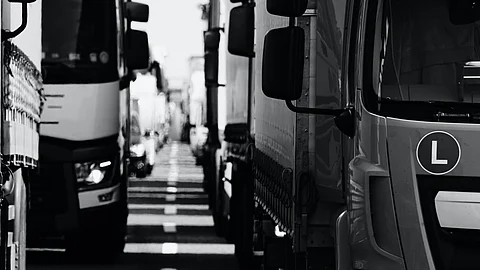By Veselina Dzhingarova
Almost every driver feels a little paranoid driving near a large commercial truck. And with good reason. A fully-loaded semi truck can weigh up to 80,000 lbs. Most passenger vehicles weigh between 2,500 and 6,000 lbs — meaning they are no match for a large truck in a collision.
In one recent year, atotal of 4,714 people in the U.S. died in truck accidents. Over ten percent of fatal accidents each year involve large trucks, despite only accounting for five percent of vehicles on the road.
You may wonder what you can do to stay safe when driving near large trucks. We explore the topic in more detail below. If you’ve been in a truck crash, speak to a truck accident lawyer to learn more about your right to compensation.
1. Avoid Truck’s Blind Spots
Semi-trucks are approximately 72 feet from end to end. Due to their size and length, such trucks have more blind spots — and bigger blind spots — than passenger vehicles. In fact, they have blind spots, also known as “No Zones,” around the front, back, and sides of the vehicle. The FMCSA has estimated that one-third of semi-truck accidents take place in the truck’s blind spots.
Unfortunately, a truck’s blind spot can span multiple lanes, making it difficult to avoid the zone completely. However, you can reduce your chances of a blind spot accident by:
● Do not pass a truck on its right side — the location of its largest blind spot.
● Pass the truck quickly on the left side
● Do not tailgate a truck or follow too closely
● Don’t switch lanes in front of a truck until you have ample space to do so
The best way to handle truck blind spots is to minimize your time in them.
2. Give Trucks Sufficient Time to Slow Down and Stop
Large trucks need longer distances to stop than passenger vehicles. If traveling at a high speed, a truck may require up to 200 yards to stop (the length of two football fields).
Drivers of passenger vehicles risk causing an accident when they switch into a lane occupied by a truck without giving the truck proper space to stop or slow down. Trucks need adequate time to respond to traffic, road hazards, and weather conditions.
When you switch lanes in front of a large truck, make sure you are well in front of the truck before changing lanes. Ideally, you should wait until you can see the entire truck in your rearview mirror.
3. Watch Out for Truck’s Wide Turns
Trucks have a large turn radius. They often have to enter an adjacent lane to make a turn, especially a left turn, to avoid hitting a curb, sidewalk, or another motor vehicle. Additionally, truck drivers frequently have to slow down as they attempt a turning maneuver to avoid tipping over.
Truck accidents can occur when other drivers try to pass a turning truck. You can stay safe near a turning truck by:
● Watching for a truck driver’s turn signal to identify a potential turning maneuver
● Waiting for a truck to turn before you pass
● Leaving a truck plenty of space to turn if you are in an opposite lane or another part of an intersection
By following the tips above, you can give big rigs the respect they deserve and reduce your odds of getting into a truck accident.


